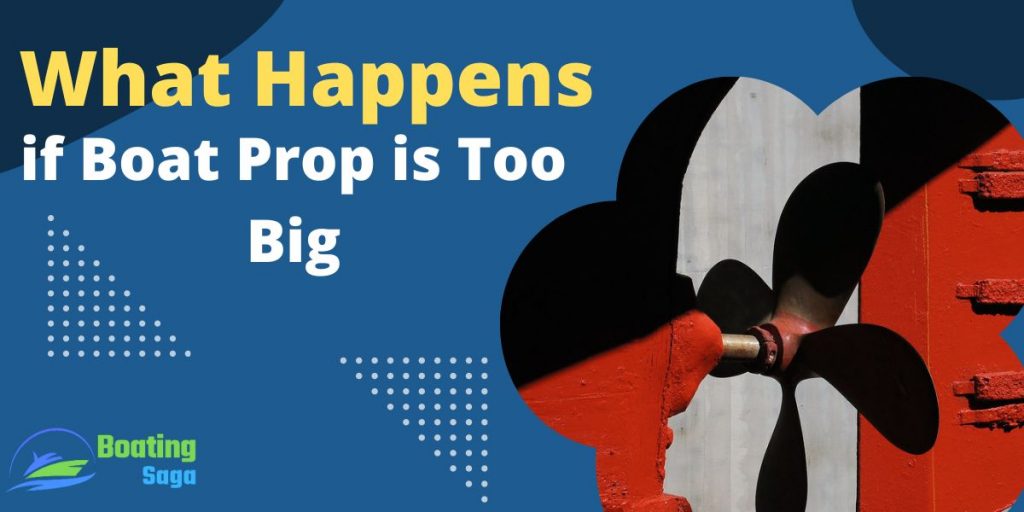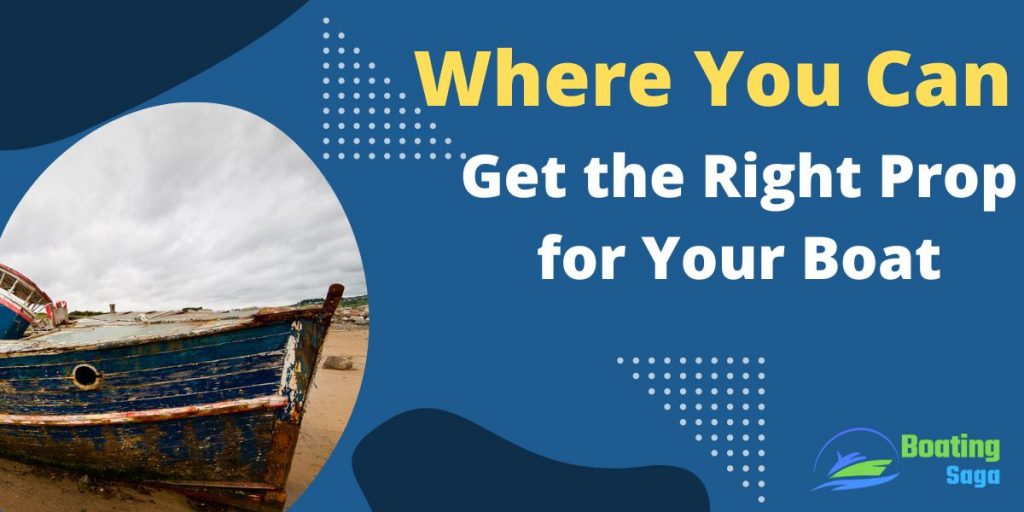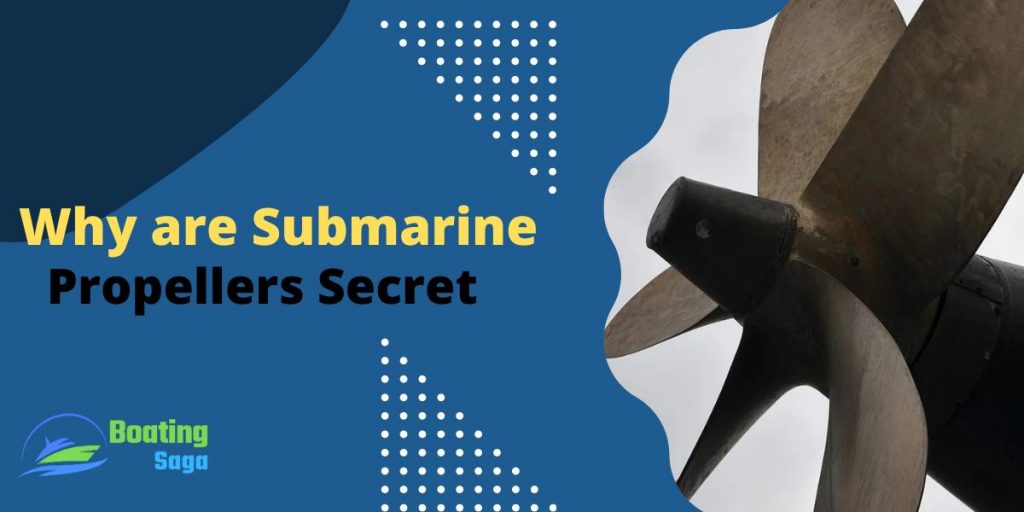
Boat speed is a crucial factor for fishermen, as well as other water enthusiasts. There are many ways to increase your boat speed, but one of the most important is through the propeller. The right propeller can help you get to your destination faster, and with less hassle.
How to Increase Boat Speed With Prop?
The size and shape of the prop is important. Make sure that you keep it clean and free of debris, and check the blades regularly for wear and tear. It’s important to take care of it properly. You also need to make sure that the prop is compatible with your engine.
Make sure that everything else on your boat is in good condition and is working properly.The right propeller can help improve your speed, fuel economy, and handling.
How Can a Prop Increase Speed?

There are many ways that you can increase your boat speed with prop. Here is the list:
Prop Size is the Key
A propeller’s size directly affects a boat’s speed. Larger props move more water and create more thrust, which allows boats to travel faster. However, larger props also require more horsepower to rotate, so it is important to choose the right size prop for your boat.
Too small a prop will cause the engine to work harder than necessary and reduce the boat’s top speed. Conversely, too large a prop can overload the engine and significantly reduce performance. Boaters should consider the size of their prop when choosing one for their vessel.
Prop Location and Adjustment
When it comes to boat speed, many people don’t think about the location of the prop on the boat. But, this can actually affect how fast your boat goes. If you have a prop that’s too close to the hull, it will cause drag and slow down your boat.
If you have a prop that’s too far out from the hull, it will cause cavitation and also slow down your boat. So, it’s important to find the right spot for your prop so that you can get the most speed out of your boat.
The ideal position for a propeller is close to the center of the boat, where it has the least amount of drag and provides maximum stability.
Prop Type and Design
Boat propellers come in many different shapes and sizes, and each type of propeller provides a different amount of thrust. The most common types of boat propellers are three-blade and four-blade propellers. Three-blade propellers provide more thrust than four-blade propellers, but they are also less efficient. Some boat propellers have more than four blades, but these types of propellers are not very common.
The shape of the blade also affects the amount of thrust that a propeller produces. Blades that are curved inward (known as cup blades) produce more thrust than blades that are curved outward (known as knife blades). Cup blades are more efficient than knife blades, but they also create more noise and vibration.
You can also use sharrow boat propeller as well which is costly but for the long run, it’s definitely worth it!
Check the Prop for Damage
The propeller must be in good condition to ensure that the boat can reach its top speed. If there is any damage to the propeller, it can reduce the boat speed.
One common type of damage to a propeller is corrosion. Corrosion can weaken the metal and make it brittle. This can lead to cracks or other damage to the propeller blades. If there is significant corrosion on the propeller, it may need to be replaced.
Another common type of damage to a propeller is blade dents or gouges. These can occur when something hits the propeller blades, such as a floating object or another boat.
Make Sure the Prop is Tight
Picture a propeller on your boat. Now imagine it’s not turning as fast as it could be. That’s because the prop isn’t tight enough. A loose prop can rob your boat of speed and power, making it harder to get where you’re going.
Here are a few tips for making sure your prop is as tight as possible:
- First, use a torque wrench to make sure the prop bolts are tightened to the correct specifications.
- Second, use locktite or another type of threadlocker on the bolts to keep them from loosening over time.
- Third, check the bolts regularly and tighten them if necessary.
It’s better to check the tightness of your prop before each trip out on the water.
Keep the Boat Prop Clean
One of the quickest and easiest ways to increase your boat speed is to keep the propeller clean. When the propeller becomes dirty, it creates drag on the boat, which reduces its speed. By keeping the propeller clean, you can minimize this drag and improve your boat’s performance.
There are a few simple ways to keep your propeller clean. One is to regularly check it for dirt and debris and remove any that you find. You can also use a soft brush or cloth to clean it off. If there is a lot of build-up on the propeller, you can use a prop cleaner or degreaser to remove it.
It’s also important to keep the area around the propeller clear of any obstructions. Debris or seaweed can create drag and slow down your boat.
Installing a New Prop
Installing a new prop is an easy way to increase your boat speed. There are many different propellers on the market, so it is important to find the right one for your boat. Be sure to consult with a knowledgeable salesperson to select the best propeller for your needs.
Once you have selected the right propeller, it is important to install it correctly. Improper installation can damage your boat and void your warranty. Always follow the manufacturer’s instructions when installing a new propeller.
If you are not comfortable installing the new propeller yourself, take it to a qualified marine mechanic. He or she will be able to properly install the prop and ensure that it is working correctly.
What Affects Boat Speed? Prop Isn’t the Only Factor!

When it comes to boat speed, the propeller is often seen as the primary factor. And while it’s certainly a major player in how quickly your boat moves through the water, there are other elements at work as well. Here are three things that can affect your boat speed - even with the same prop:
1. The engine: The larger the engine, the more power it will produce. However, you also need to consider the weight of the engine when selecting a boat.
2. Hull design: The shape of your hull - and specifically, its displacement - plays a role in how fast your boat goes. A boat with a deep V-hull will move more easily through the water than one with a flat bottom, for example.
3. Weight distribution: Another key factor is how your weight is distributed on the boat. Heavier items should be placed low on the vessel to provide better stability and help maintain momentum.
4. Environmental conditions: Finally, wind and wave conditions also impact boat speed. A stiff breeze will push a boat along more quickly than calm waters, and larger waves will cause more drag on the vessel than smaller ones.
So, while the prop is an important factor in determining speed, there are other things to consider as well.
What Are the Benefits of Increasing Boat Speed?
There are many benefits to increasing your boat’s speed.
- One of the most important is increased prop efficiency. A boat that is moving faster will create more thrust with less drag on the propeller. This means that you can move through the water more easily and with less horsepower.
- Another benefit of a faster boat is that it is easier to stay on course. When travelling at high speeds, the boat becomes more stable and resists overturning. This makes it safer for you and your passengers when travelling in rough water or windy conditions.
- Finally, a fast boat is just more fun to drive! The added speed creates a sense of excitement and exhilaration that can’t be matched by a slower vessel. So next time you hit the open water, make sure to throttle up for some serious fun!
How Does Boat Propeller Size Affect Speed the Most?
The size of a boat’s propeller affects its speed the most. Larger propellers create more thrust and can propel a boat faster. However, a larger propeller also requires more horsepower to turn, so a boat with a larger propeller will be slower than one with a smaller propeller when using the same engine.
There is no one-size-fits-all answer to the question of what size propeller is best for a particular boat – it depends on the boat’s weight, engine power and other factors. Some boaters opt for a slightly smaller propeller that provides more speed, while others choose a larger propeller that offers more torque and pulling power.
Ultimately, it’s up to the boater to decide which size propeller works best for his or her needs.
What Happens if Boat Prop is Too Big?

If the propeller on a boat is too big, it can create problems. For example, the extra drag can make the boat harder to move and can stop it from reaching its top speed. The larger propeller can also cause the engine to work harder, which can lead to decreased fuel efficiency and increased wear and tear on the engine.
If the propeller is too big, it may not fit in the boat’s hull, which could damage the boat or cause it to sink.
Additionally, a too-big prop can cause excessive vibration and noise, which can be both dangerous and annoying. For these reasons, it’s important to choose the right size prop for your boat.
How Do You Know if You Need a New Prop?
If you’re unsure if you need a new prop, there are a few things to consider.
The age and condition of your current prop are important factors, as is how often you use it. If your prop is more than 10 years old and starting to show wear and tear, or if you use it frequently and it’s starting to feel less responsive, it may be time for a new one.
One indicator that your propeller might need to be replaced is if you’re experiencing vibration or noise while the engine is running. This could be a sign that the blades are no longer balanced or that the prop is starting to wear down.
Another indication is if you’re having trouble getting the boat up to speed or if it’s taking longer than usual to get up to cruising speed. The pitch of the propeller might also need to be adjusted or can be changed if you’ve had recent changes in your boat’s weight or horsepower.
Finally, consider how much the new prop will cost compared to the old one. If the difference is significant, it may be worth investing in a new one. If you’re unsure whether or not your prop needs to be replaced, it’s always best to consult with a professional.
How to Find the Right Propeller for Your Boat?
When it comes to choosing the right propeller for your boat, there are a few things you need to take into account. The first is the size of your boat. You’ll need to find a propeller that’s the right size and type for your hull. The next thing you need to consider is your engine size and power. You’ll also want to take into account the weight of your boat and how you plan to use it.
There are a few ways to find out. One way is to consult with a local dealer or mechanic. They can help you determine the best propeller for your needs and recommend a specific model. You can also do some research online or in catalogs to find the right propeller for your boat.
Where You Can Get the Right Prop for Your Boat?

When you are out on the water, having the right propeller for your boat is key to a good time. Here are some places you can find the perfect prop for your vessel:
1. Local boat dealers often carry a variety of propellers, and they can help you find the best one for your boat.
2. Online retailers also have a wide selection of propellers to choose from.
3. You can also order propellers directly from the manufacturer.
4. If you have an old or damaged propeller, you may be able to get a replacement from a salvage yard or online auction site.
5. Some marinas offer propeller-fitting services, so be sure to ask if that is something they provide.
Conclusion
By following the tips and tricks mentioned in this article on how to increase boat speed with prop, you can achieve a greater level of performance from your vessel. Whether you’re looking to make a competition-level boat faster or just want to make your weekend fishing excursion more enjoyable, utilizing the right propeller can make all the difference.
So get out there and start enjoying the water even more!



Pingback: How to Remove Barnacles from Propeller & Boats Hull - BoatingSaga
Pingback: Which Way Does a Boat Propeller Turn to Go Forward? - BoatingSaga
Pingback: Which Type of Propeller is More Efficient in Maneuvering Operation
Pingback: What Does Cupping a Boat Propeller Do (5 Benefits to Know)
Pingback: How Good Are Solas Props (4 Benefits You Should Know)
Pingback: Trim Tabs vs Prop: The Battle of the Boats